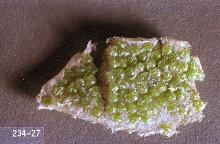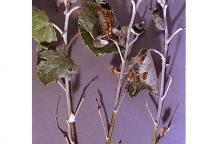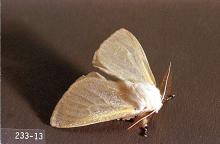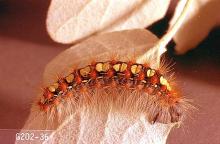Leucoma salicis
Pest description and damage The adult moth (over 1 inch wingspan) is satiny white with black markings on the legs. Larvae are approximately 2 inches in length when grown and reddish brown with double white patches on top and tufts of hairs along the sides. They can seriously defoliate cottonwood, poplar, and willow. They occasionally attack oak and aspen, Lombardy poplar and silver maple.
Biology and life history The insect overwinters as larvae in a small silken cocoon attached to the trunk or branch of the host tree. The larvae become active and feed after leaves have fully formed in the spring. After pupation, the adult moth emerges in midsummer. The adult moths are attracted to lights. The females lay eggs in masses on host plants, often on the leaves, but also on bark. After hatching, the young larvae feed until fall, then hibernate. There is one generation per year.
Pest monitoring Watch for signs of skeletonizing by the newly hatched larvae in fall and resumption of feeding in early spring as new growth develops.
Management-biological
Look for evidence of parasitoid wasp cocoons in the bark crevices. There are native, as well as four introduced, parasitoids in Canada. Parasitoids may cause the sudden decline in numbers just when defoliation is greatest and larvae are most noticeable and abundant. It may be even more important to monitor for parasitoids at that time.
Management-cultural control
Larvae and pupae may be removed from affected leaves. Remove heavily infested twigs. Use light to attract females to small host trees to determine egg hatch and caterpillar feeding to better launch control measures.
Management-chemical control
See Table 2 in:
Chemical Control of Landscape Pests
For more information
See "Caterpillar" in:





